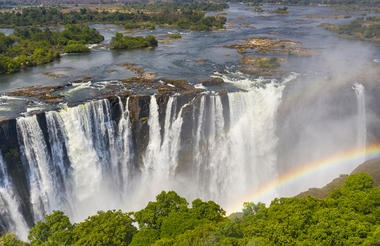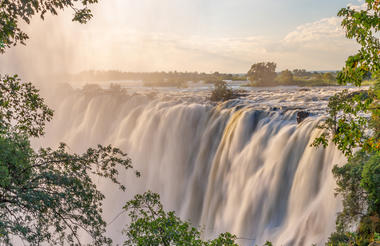Located in southwestern Africa, Namibia boasts a well-developed infrastructure, some of the best tourist facilities in Africa, and an impressive list of breathtaking natural wonders. Visitors can explore the capital of Windhoek and discover the lovely coastal town of Swakopmund boasting remnants of the country’s German influence, reflected in the architecture, culture, cuisine and the annual Oktoberfest celebrations. To properly appreciate this extraordinary country, you will have to venture out of the cities to explore the remarkable natural landscapes Namibia has to offer. These include: the impressive Fish River Canyon; the vast Etosha National Park teeming with abundant wildlife, such as lions, desert-adapted elephants and the Hartmann's Mountain Zebra; the hauntingly beautiful Kalahari Desert; and of course the Namib Desert stretching for over 1,200 miles along the magnificent Atlantic Coast. Namibia is an ideal destination for travelers seeking an unforgettable African experience in a uniquely beautiful untamed wilderness.
Situated in Central Namibia, the cosmopolitan city of Windhoek serves as the capital of the country. It is home to an international airport and a plethora of restaurants, shops, entertainment venues and accommodation options. The city is clean, safe and well-organized, with a colonial legacy that is reflected in its many German eateries and shops, and the widespread use of the German language. Windhoek has an interesting mix of historical architecture and modern buildings, many of which are worth a look, including the Alte Feste an old fort, the 1896 Christuskirche Christ Church, and the more contemporary Supreme Court.
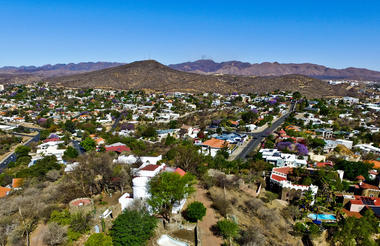
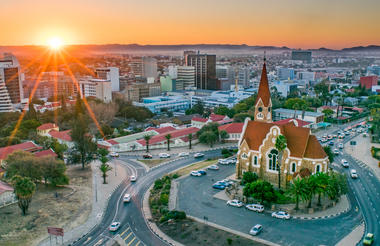
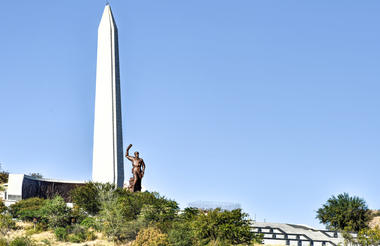
Located in Central Namibia, the Naukluft Mountains cut a fine silhouette against the vast open skies of this incredibly beautiful country. Private farms occupy the northern reaches and to the south, the range falls within the spectacular Namib-Naukluft National Park. Rising steeply from the vast plains of Central Namibia, the rugged landscape holds a fascinating history, interesting geology and a boasts a variety of deep gorges, caves, small streams and beautiful waterfalls. These mountains support an array of wildlife including over 50 mammal species such as leopard and mountain zebra, various antelope species and almost 200 species of bird. Popular activities include game viewing, hiking, bird watching, camping, off-roading in a four-wheel drive vehicle, and swimming in the spectacular rock pools at the Kudusrus campsite.
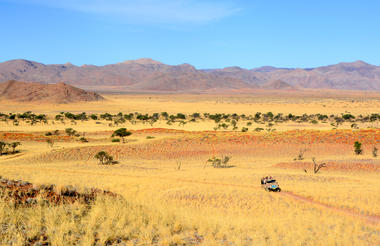
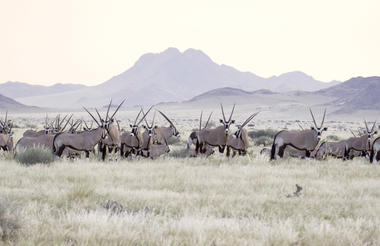
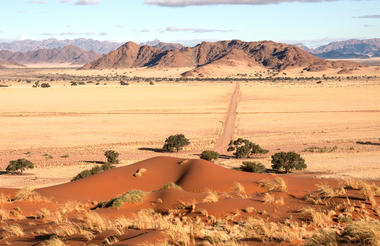
Set along Namibia's spectacularly scenic coast, the seaside town of Swakopmund is known for its wide-open avenues, colonial architecture, and is surrounded by otherworldly desert terrain. Founded in 1892 as the main harbour for German South West Africa, Swakopmund is often described as being more German than Germany. Now a seaside resort town, Swakopmund is the capital of the Skeleton Coast tourism area and has plenty to keep visitors happy. The quirky mix of German and Namibian influences, adventure options, laidback atmosphere and cool sea breeze make it very popular Namibian destination. Visitors can look forward to a number of exciting activities including quad biking, horse riding, paragliding, fishing, sightseeing and fascinating desert tours.
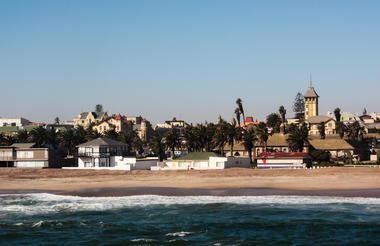
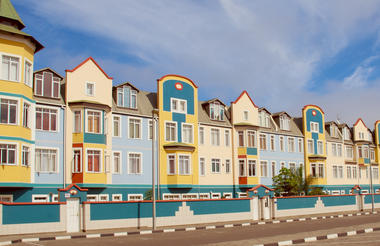
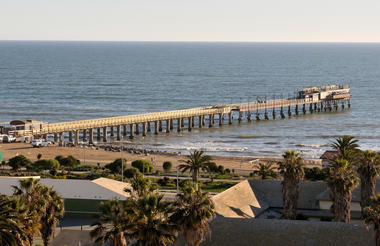
Located just south of the boundary of Etosha National Park in northwestern Namibia, Etosha South makes up the southern region of this wild paradise. Ogava Private Game Reserve shares the southern boundary with Etosha National Park and offers an array of luxury lodges overlooking picturesque landscapes dotted with abundant wildlife. The national park can be accessed via the southern entrance at Andersson’s Gate. Visitors can catch a glimpse of a variety of wildlife including: lion, giraffe, elephant, white and black rhino, and a multitude of plains game. Popular activities include: game drives, tracking rhinos on foot, guided nature walks, or watching the sunset over this magnificent landscape.
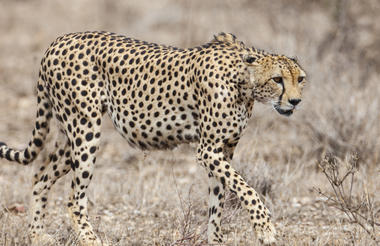
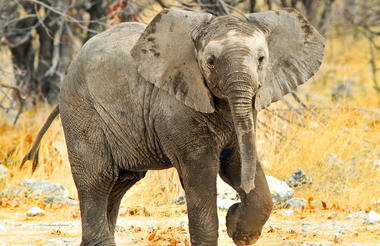
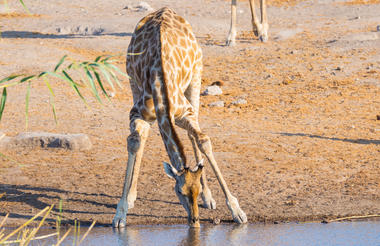
Located in Northwestern Namibia, Etosha East is a protected sanctuary in the world-renowned Etosha National Park, known as one of the most accessible game reserves in Southern Africa. Etosha East boasts vast open plains scattered with semi-arid savannah grasslands dotted with watering holes and secluded bush camps. An impressive 5000-square-kilometer Etosha salt pan makes up a large area of the eastern side of the park and can even be seen from space. This remote area teems with abundant wildlife such as lions, elephants, black rhinos, and giraffes, as well as a variety of birdlife featuring flamingos, ostriches, eagles, hornbills, and owls.
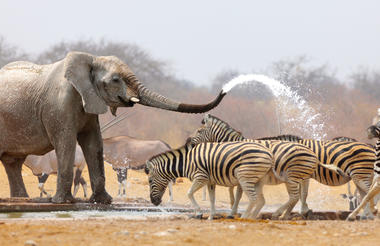
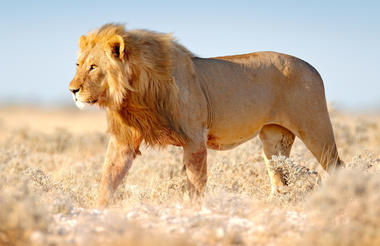
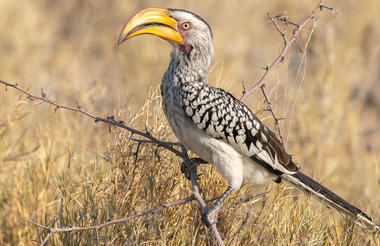
Bordering Angola, on the banks of the Okavango River in northern Namibia, the town of Rundu serves as the capital of the eastern Kavango region. Rundu is renowned for its local woodcarvers market as well as the numerous woodcarvers' huts dotting the side of the road. The town provides a great stopover to refuel for visitors heading to Katima Mulilo as well as an excellent base from which to explore the magnificent surrounding areas. Visitors to Rundu can enjoy the beautiful surrounds including the magnificent Popa Falls and Mahangu Game Reserve. Other popular activities include great game viewing, excellent bird watching as well as kayaking on the spectacular Kavango river.
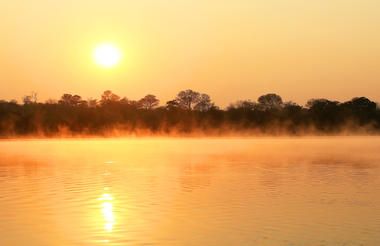
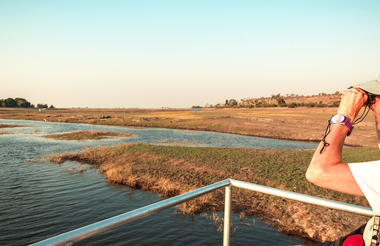
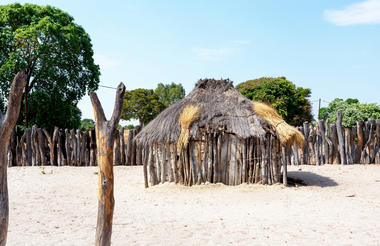
Set roughly 200 kilometres east of Rundu on the southeastern banks of the great Okavango River, the small village of Divundu is a wonderful destination from which to explore the river, game parks and national reserves of the area. Visitors can enjoy fishing or bird watching boat safaris, or visit the Mahango Game Park, which is home to herds of elephant as well as hippo, buffalo, giraffes, antelope, and many other animals. The spectacular Popa Falls, a dramatic series of cascades - are a popular must-see attraction. Divundu is also the perfect base for adventures in Botswana and the Okavango Delta.
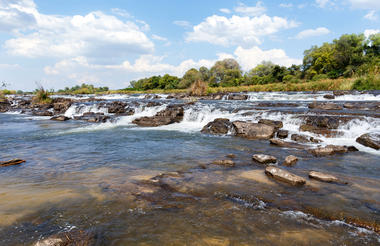
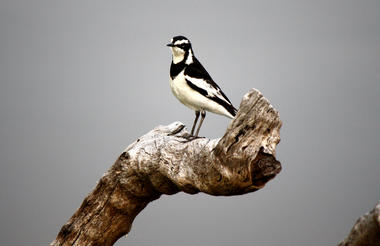
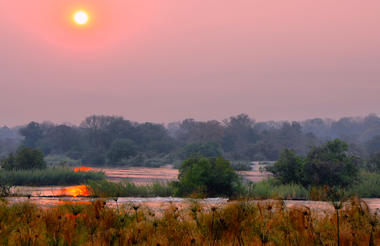
Situated in the southern reaches of Africa, Botswana is renowned for its pristine wilderness areas characterized by deep lagoons, wetlands, lush palms, rugged hills, and desert plains scattered with scrubland. The country’s primary tourist draw is undoubtedly the vast red expanse of the Kalahari Desert and its remarkably beautiful Okavango Delta. These natural wonders provide a tranquil haven for an abundance of African wildlife to thrive. Other highlights include the impressive Makgadikgadi Salt Pans, where visitors are privy to massive zebra migrations during the flood season; the Savuti plains, which hosts large prides of lions; and the Tsodilo Hills, where 4,500 rock paintings form a unique record of human settlement over many millennia.
Set on the banks of the beautiful Thamalakane River in northern Botswana, Maun is the third largest town in this scenic southern African country. Maun is the starting point for most expeditions into the Okavango Delta and, as a result, has developed into a bustling metropolis that is considered Botswana’s tourism capital. Area attractions include a renowned riverboat that offers cruises up and down the Thamalakane River; the forest groves of the Maun Game Reserve; and Moremi Game Reserve, home to hippos, lions, rhinos and more. Maun also serves as the jumping off point for many safaris and air charters as well as offers 4x4 rentals. Don’t miss the Nhabe Museum exhibiting the local history, art and culture of the Ngamiland region.
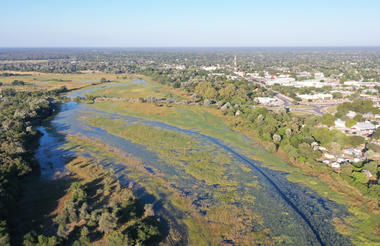
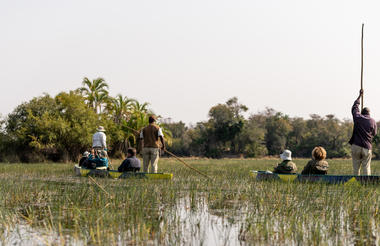
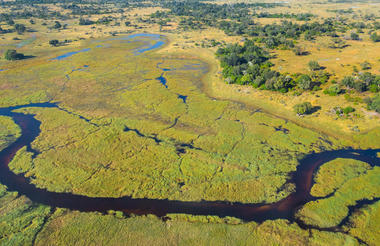
Situated on the banks of the Khwai River near the famous Okavango swamp, the village of Khwai is set in the North-West District of Botswana. The village fringes the magnificent Moremi Game Reserve which is known for its incredible array of wildlife. It serves as a gateway to the reserve as it is set just outside the North Gate. of Moremi. Khwai provides an excellent base from which to explore the spectacularly scenic surrounding area. It is to be home to some of Botswana's most beautiful landscapes which feature vast grass plains, a patchwork of lagoons, shallow pans and lush woodland forests. Visitor can look forward to spotting a fantastic variety of wildlife, learning about the San community and enjoying a wide selection of ecotourism activities. Commonly spotted wildlife species include: lion, leopard, elephant, cheetah, hippo, wild dog and buffalo.



The Makgadikgadi Pan is the world’s largest salt pan, formed on the bed of an ancient lake that began evaporating aeons ago. Visiting Makgadikgadi is a unique desert experience: in the dry season, this vast expanse of sun-baked salt glistens in the light, and when the rains come the pan is home to a cornucopia of flamingos and other waterbirds, as well as one of Africa's biggest zebra populations, whose annual migration is a wonder to behold.
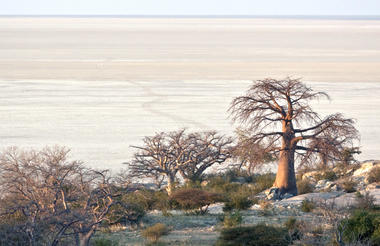
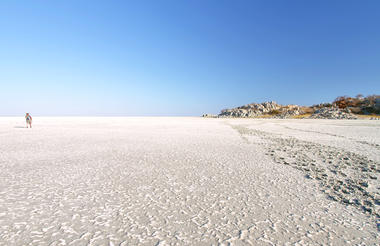
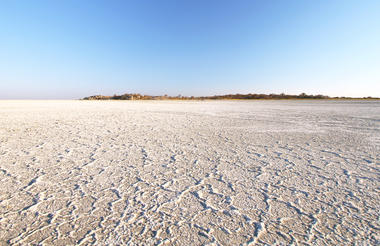
The Chobe River forms the northern boundary of the Chobe National Park, renowned for its diverse and abundant game viewing opportunities. A visit to this area guarantees close encounters with an array of African wildlife. This section of the park is best known for its dense concentration of wildlife, including elephant and hippo populations, but the waters attract all manner of game including large herds of buffalo and the lions that prey on them. Visitors can look forward to some exciting activities such as: driving along the game-dotted river banks in a 4WD; cruising along the river in a motorboat; and spotting rare birdlife - and for a unique, luxury safari experience, hire a houseboat.

A nation of spectacular natural beauty, friendly people and rich culture, Zimbabwe’s status as one of Africa’s leading safari destinations was dampened for years by its political instability. But now that the country is transcending its strife and returning to a state of equilibrium, it is once again emerging as a vacation highlight of the continent. Victoria Falls – known to locals as "The Smoke That Thunders" – is one of the seven natural wonders of the world, and the sheer power of this massive body of water plunging into the Zambezi Gorge is awe-inspiring and unforgettable. Lake Kariba, with its game-rich shores and islands, is an idyllic safari spot featuring mind-blowing sunsets; Hwange National Park is known for its huge herds of elephants; and a kayak trip down the Zambezi through the Mana Pools National Park will appeal to the intrepid traveller, providing close encounters with crocodiles, hippos and a host of other wildlife.
Situated in western Zimbabwe, the Hwange National Park is the country's biggest reserve, home to a profusion of wildlife, including giraffe, lion, zebra and approximately 40,000 elephants. It provides a sanctuary for all the country’s endangered species, including a population of wild dogs thought to be among the most sizeable surviving groups on the continent. The park’s magnificent terrain ranges from desert dunes, savannah lands and mopane woodlands to rocky outcrops and sparse forests. Visitors can look forward to game drives, guided walks or horse riding safaris. Other highlights include: the Bumbusi National Monument and the Nyamandhlovu Pan.
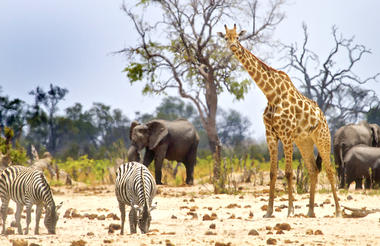
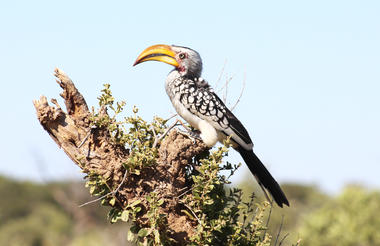
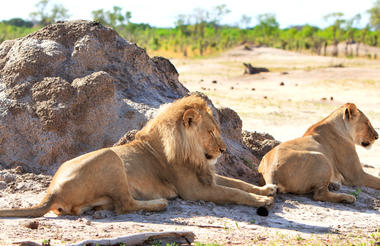
Resting on the southern banks of the Zambezi River at the western end of the eponymous falls, Victoria Falls Town is compact enough to walk around and makes an ideal base for travelers exploring the Seventh Wonder of the World, the unfathomably vast Victoria Falls. About two thirds of the falls can be viewed from the Zimbabwean side and, while the falls are undoubtedly the star attraction, the area provides both adventure seekers and sightseers with plenty of opportunities to warrant a longer stay. Popular activities include scenic flights over the falls in helicopters or micro lights, bungee jumping off the Victoria Falls Bridge, white-water rafting (seasonal), and day trips to Chobe National Park. The town itself offers some excellent accommodation and restaurant options as well as an eclectic variety of African curios and authentic art sold by friendly Zimbabwean locals who are wonderfully welcoming and eager to help you enjoy your stay.

